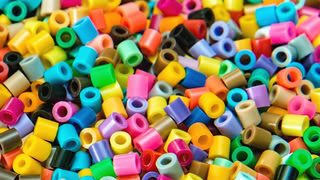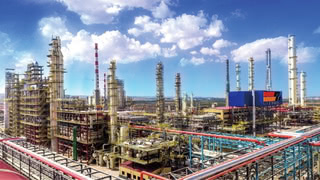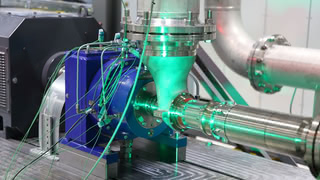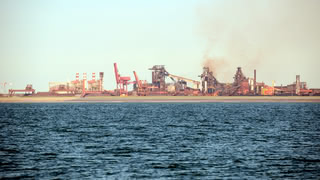Just Stop Burning Trash
Waste-to-energy plants are a massive source of carbon dioxide emissions. Yet, it is not obvious what the best solution for high-emitting incinerators would be. Should incinerators be equiped with carbon capture? How much can recycling rates be improved, and what role should chemical recycling play? And could landfills be a carbon storage solution?
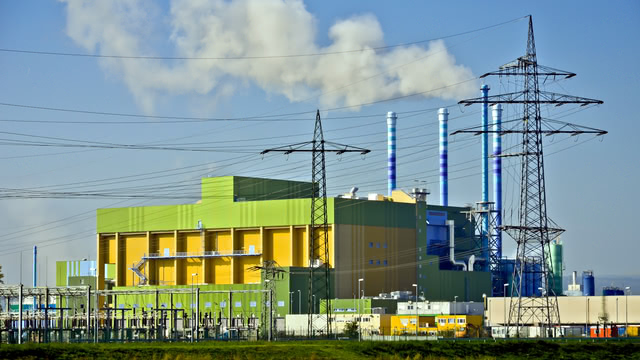
Burning waste to generate electricity and heat is a common way of waste treatment in many parts of the world. These waste-to-energy plants are a significant source of greenhouse gas emissions. CO₂ emissions for energy generated from waste are just slightly lower than those of coal and worse than fossil gas. Due to their mixed and often unpredictable input, waste incinerators can also be a source of toxic pollution.
In countries where waste incineration is common, their emissions can be enormous. In Germany, over 90 waste-to-energy plants are operational, and their combined emissions are around 25 million tons of carbon dioxide. It is more than what the cement industry emits.
Burning trash is a significant climate problem. Yet, surprisingly, waste-to-energy plants are sometimes pushed as a climate solution and a green energy source. This usually relies on two arguments, both of which are on shaky ground.
Proponents of waste incineration will argue that, of those high emissions, around half of them do not count to begin with because they are of biogenic origin. Mixed waste is usually a mixture of biogenic (e.g., paper) and fossil materials (mostly plastics).
While burning biogenic material causes CO₂, the carbon molecules in those products have been taken from the air before through the photosynthesis of plants, and thus, it is not new carbon added to the atmosphere. This is also why bioenergy is commonly viewed as climate neutral.
Outdated views on Biogenic CO₂ Emissions
This idea that it is no problem to emit biogenic carbon is, however, one that does not fit into the bigger picture of climate mitigation.
Technologies that use carbon dioxide (Carbon Capture and Utilization, CCU) to make fuels for hard-to-abate sectors like shipping and aviation or to replace petrochemicals will eventually need a sustainable source of carbon dioxide. Biogenic CO₂ is the obvious option, as the alternative - direct air capture - is incredibly expensive for the foreseeable future.
Furthermore, we are seeing a lot of discussions about carbon removal these days. Again, we have options that rely on biogenic carbon — often called BECCS (Bio Energy with Carbon Capture and Storage) — or excessively expensive direct air capture.
If one believes that either CCU or BECCS shall play any significant role in future climate mitigation scenarios, the idea that biogenic CO₂ emissions "don't count" is no longer a defensible position.
There is also another way to look at it. A CO₂ molecule in the atmosphere will cause the same amount of damage, no matter what its source is. If we can prevent it from entering the atmosphere, it avoids climate damage.
Some even argue that emissions from waste incineration should not count at all and that they already have a negative emission balance. The reasoning goes that by replacing fossil fuel energy sources and avoiding methane-emitting landfills, waste-to-energy plants have a positive climate impact.
These arguments are comparing waste incineration to even worse alternatives. While it is true that there are things worse than waste incinerators, that does not make high-emitting plants that burn plastics and other trash a particularly great idea. Yet, what are the alternatives?
It is certainly a good idea to look for ways to reduce the amount of waste produced. Yet, even the most ambitious proponents of waste reduction strategies will probably agree that we will not be able to create a society without waste.
Waste incinerators have traditionally seen favorable policy treatment within the European Union. The energy generated from their biogenic fuel share counts as renewable, allowing the creation of guarantees of origin, the EU's flawed green electricity certificates. Emissions from waste-to-energy plants are currently not included in the EU's emission trading system (ETS).
However, some countries have started pricing the fossil share of CO₂ emissions from waste incineration, and the EU may include waste incineration into the emission trading system soon. Currently, the European Commission is running a public consultation for a review of the ETS system, and including waste incinerators and landfills is under consideration. For now, it appears unlikely that the full emissions of waste incineration will be priced, but even pricing the fossil share would be a significant incentive to reduce CO₂ release.
Are Waste Incinerators a good target for CCS?
Many operators of waste incinerators are considering the use of Carbon Capture and Storage (CCS) technology. However, that turns out to be not so easy.
A report published in 2022 by the organization Biofuelwatch provides an overview of past experiences with carbon capture technology at waste incinerators and bioenergy plants. Most of these projects were small pilots and have never captured any meaningful amount of CO₂. Reading the report, it is noteworthy that many of these projects, while publicly funded, have not published detailed information about their performance.
The largest carbon capture project in this sector is operating at the AVR Afalverking Duiven waste incinerator in the Netherlands. It captures only around ten percent of its carbon dioxide. It should, however, be noted that CO₂ is not permanently stored but used in the horticulture industry for greenhouses. Almost all of that CO₂ will eventually enter the atmosphere later.
AVR plans to install a much larger CO₂ capturing facility at its Rozenburg waste incinerator, with the intention of selling half of its CO₂ to the horticulture industry and storing the other half below the North Sea using the infrastructure of the Porthos CCS project.
According to AVR's latest company report, financing of the project is challenging: "As far back as 2022, we were awarded multiple SDE++ subsidies for our CCU- and CCS projects. Since then, the projected costs of transport and storage of CO₂ have risen substantially compared to the amount the subsidiser based their calculations on at the time." (SDE++ is a cleantech subsidy program in the Netherlands.)
Norway's capital Oslo had long planned to equip its Klemetsrud waste incinerator with CCS. It was one of the initial partner projects for Norway's Northern Lights project, a CO₂ storage site offering offtake of carbon dioxide emissions by ship from facilities all over Europe. The Klemetsrud CCS project was put on hold in 2023 due to cost increases and only recently restarted after additional government funding.
Switzerland's capital Zürich plans to implement CCS at its Werdhölzli sewer sludge incinerator. Switzerland currently has no CO₂ storage sites. Zürich plans to use technology from the company Neustark to store CO₂ in demolished concrete and to transport the rest to the Grønsand storage site in Denmark. The city of Zürich expects costs of around 600 Swiss Francs (around 640 Euro or 640 US Dollars) per ton of CO₂ avoided, which is quite substantial but not surprising. The sewer sludge incinerator is also a test bed for plans to equip the much larger Hagenholz waste incinerator with the technology later.
I have previously written about the high costs of post-combustion CCS. Costs of CCS are, to a large part, determined by the need to separate CO₂ from a facility's flue gas, and the lower the CO₂ concentration, the more expensive it gets. Usually, a technology known as amine scrubbing is used for CO₂ separation.
Waste incinerators have a slightly higher CO₂ concentration than gas power plants, but it is still relatively low, and CO₂ separation is therefore quite expensive. Mixed and sometimes unpredictable inputs in incinerators add another challenge, as unexpected substances in the flue gas can damage the CO₂ separation technology due to catalyst poisoning.
To cover the high costs, some operators of waste incinerators with plans for CCS came up with a possibly unexpected idea: selling carbon removal credits for the biogenic share of their emissions. Frontier, an organization founded by IT corporations facilitating carbon removal offtake, has announced a partnership with Hafslund Celsio, operator of the waste incinerator in Oslo. E.ON and ARC, operator of a waste incinerator in Denmark's capital Copenhagen, have similar plans.
The widespread use of CCS in waste incinerators also comes with considerable infrastructure requirements. CO₂ needs to be transported to storage sites. Creating local storage sites takes time and is not possible everywhere, as it needs suitable geological formations. On-land CO₂ storage sites are also often faced with local opposition.
It is, in principle, possible to transport CO₂ in storage containers. It has been done for smaller pilot projects. However, for larger CO₂ volumes, it becomes quite impractical, as it would involve tens of thousands of container transports for an average-sized waste incinerator.
That leaves CO₂ pipelines as an option. Yet, the scale of a CO₂ pipeline grid serving waste incinerators would be enormous. Germany has around 90 waste-to-energy plants, Sweden has around 30, and Japan has over 300. A study by the German Cement Industry Association estimates that implementing CCS at all of Germany's waste-to-energy plants and its cement and lime plants would require a CO₂ pipeline grid of 4,800 kilometers (around 3,000 miles).
CO₂ pipelines are not a new technology, even at such large scales. In the United States, several thousand kilometers of CO₂ pipeline grids exist. They are primarily used for Enhanced Oil Recovery. However, building such a pipeline grid in densely populated countries like Germany is certainly challenging and comes with safety risks. In 2020, a pipeline rupture injured multiple people in Mississippi. In 2024, the same pipeline had a rupture further south in Louisiana.
Cost explosion by a Factor of 4 ends CCU project at a German waste incinerator
The publicly-owned company ZASt operates a waste-to-energy plant in the town of Zella-Mehlis, Germany. Already around a decade ago, ZASt wondered what to do about the CO₂ emissions of the RABA Südwestthüringen, as the plant is called.
CCS did not appear to be a feasible option. The geology in the area is not suitable for CO₂ storage sites. More recent plans for an initial CO₂ pipeline grid in Germany will not help either, as they do not connect the region where the incinerator is located.
ZASt had the idea of using some of their CO₂ — and their own electricity — to produce E-Methanol, one of the technologies often summarized as CCU. In 2020, it seemed that the project would go ahead. ZASt received a grant for subsidies of 8 Million euros from the local ministry of the environment, with an obligation to spend the money by 2023. However, the project was eventually canceled.
I recently interviewed Marius Stöckmann from ZASt, plant manager of the waste incinerator. According to Stöckmann, the project failed because costs were much higher than initially anticipated.
In an early feasibility study, ZASt had estimated costs of around 23 Million euros for building the plant. However, after a more detailed look and with today's prices, more than 80 Million euros would have been realistic.
Those cost increases are so substantial that they cannot be explained exclusively by inflation-related cost increases in recent years. Stöckmann explicitly mentioned substantial cost increases for the amine washing technology and the electrolyzer for Hydrogen production that made the project infeasible to realize.
It is a recurring pattern that implementing post-combustion carbon capture technology — and also hydrogen production — often incurs exceptionally high costs, and those costs are regularly much higher than initially anticipated.
One may question whether the plans for this Methanol plant were a particularly good idea to begin with. The plant would have only captured around one-tenth of the incinerator's CO₂ emissions. With an expected production capacity between 5.000 and 7.000 tons annually, it would have been a small Methanol plant. Due to scaling effects, it is challenging to operate small-scale E-Methanol plants economically.
Could ZASt have built a much larger plant instead and capture a much larger share of their CO₂? That would have required a lot more electricity, certainly more than what the incinerator produces.
The process from waste to CO₂ to Methanol also does not look favorably from its thermodynamics. It starts with energy-rich molecules in the waste input, burns them in an inherently inefficient power plant to produce heat and electricity, just to use enormous amounts of energy to go back from CO₂ to energy-rich methanol.
Something else to keep in mind about such Carbon Capture and Utilization projects is the eventual fate of the carbon. Methanol can serve either as a fuel, for example, in shipping or as a feedstock for new products. The former would appear questionable in the context of a waste incinerator, as it would convert fossil feedstocks into a fuel that is still burned and releases CO₂ into the atmosphere.
ZASt is not the only operator of a waste incinerator looking into Methanol production from CO₂. I previously covered the Swedish company Liquid Wind, which plans several large E-Methanol projects co-located at bioenergy or waste-to-energy plants.
Liquid Wind's most advanced project is located near the wase-to-energy plant Dåvaverket, operated by Umeå Energi. With a production capacity of 100,000 tons annually, Liquid Wind's Methanol plant would be much larger than the canceled project in Zella-Mehlis.
Liquid Wind is aware of the controversial nature of fossil-based CO₂ sources for such projects, and according to its web page, it only plans to utilize the biogenic share of CO₂ emissions. Liquid Wind writes: "Simultaneously, the fossil share of carbon dioxide emissions from the Dåva cogeneration plant will be captured for long-term storage in the bedrock using Carbon Capture and Storage (CCS)." (Umeå Energi, operator of the incinerator, has plans to build an advanced waste sorting plant, which may reduce the fossil share.)
How much can be recycled?
As we have seen, waste incinerators are a major source of CO₂ emissions, and equipping them with CCS or CCU is challenging and expensive. It begs the question: should we burn that much waste to begin with?
An alternative to waste disposal is recycling. Making new products out of waste materials not only reduces the amount of waste, but it can also avoid energy-intensive production of virgin materials.
Recycling works quite well for some materials. Metals, paper, or container glass already have high recycling rates. Recycling plastics is more challenging, and traditional recycling methods have limits in what they can achieve. It often cannot produce the same purity and quality as the original product, which makes it unsuitable for medical or food contact applications. And mixed or very dirty plastic waste is difficult to recycle.
However, traditional mechanical plastic recycling could still be increased considerably. According to the OECD Plastics Outlook, recycling rates differ hugely between industrialized countries. Bringing the worst performers to the level of the best would be a major improvement. Even in countries with higher recycling rates, plenty of recyclable waste still ends up in waste-to-energy plants.
Chemical Recycling could change what "unrecyclable" means
Technologies known as chemical recycling or advanced recycling promise that they could allow the recycling of a much larger share of waste materials. Pyrolysis may allow the recycling of mixed plastics that would otherwise end up in incinerators. Waste gasification may even enable a form of upcycling by converting biogenic waste streams into syngas and, subsequently, methanol. This can serve as a feedstock to produce recycled plastics of the same quality as virgin materials via the Methanol-to-Olefins process.
However, pyrolysis and gasification technologies have turned out to be difficult to implement, with many projects underperforming or failing in practice.
Many environmental NGOs are skeptical about the promises of chemical recycling. They criticize high energy needs, toxic by-products and emissions, and misleading claims of chemical recycling companies.
With few exceptions, existing waste gasification plants operational today - most of them are located in Japan - are not making recycled products. They merely burn the produced syngas. Many pyrolysis projects call themselves chemical recycling but target the production of fuels from plastics.
Whether waste is indirectly burned as syngas or fuel, in both cases, those are merely different kinds of waste incineration. The carbon molecules in the waste still end up as CO₂ in the atmosphere.
Even if some material is recycled, some concepts for chemical recycling assume that they can address their high energy needs by burning part of their product. Such concepts would likely not recycle much and would still be a form of incineration.
But while chemical recycling has its issues, it could play an important role in a future climate-neutral chemical industry. Scenarios for a chemical industry without fossil fuel feedstocks often assume a high share of feedstocks provided by chemical recycling technologies. For example, a recent project by several German research institutions called GreenFeed that looked at how Europe's chemical industry could be defossilized sees gasification of waste and bio-feedstocks and pyrolysis of plastics as leading technologies to provide feedstocks for fossil-free plastic production.
Hydrogen-based CCU technologies, which are another possibility for fossil-free plastics, require enormous amounts of energy. While chemical recycling is often criticized for its energy needs, it still requires a lot less energy compared to CCU.
For bioplastics, utilizing biogenic waste resources is most desirable, and a promising technology for converting them into plastic products is gasification. It is the above-mentioned idea of upcycling biogenic waste into plastics.
Chemical recycling would still produce CO₂ in the process. Either utilizing it with additional green hydrogen — a combined chemical recycling and CCU process — or storing it permanently is still a good idea. The local availability of hydrogen sources and CO₂ storage sites may well decide whether CCU or CCS is more desirable for a specific plant.
It is quite apparent that if large amounts of waste serve as future feedstocks for the chemical industry, this waste can no longer be burned in waste-to-energy plants. Especially waste gasification could drastically change what can still legitimately be called unrecyclable waste.
Or should we landfill Plastics?
Finally, it is worth looking at an idea that may look rather controversial but has some unsuspecting fans: should landfills be part of the solution?
Today's landfills are a significant source of greenhouse gases. It is estimated that landfills cause around ten percent of worldwide methane emissions. Furthermore, landfills can be the source of microplastics and other kinds of toxic pollution.
The main reason for methane emissions from landfills is biogenic material mixed with plastics. This creates conditions for anaerobic digestion of biogenic materials, producing a mixture of methane and carbon dioxide. Under sunlight exposure, plastics can also directly degrade into methane and ethylene. Ethylene is also a greenhouse gas.
Their negative impact on the climate and the environment is a major reason why landfills have fallen out of favor in some parts of the world. For example, in Germany, landfilling untreated municipal waste has been banned in 2005. ("Treatment" is a fancy word for "burning".) This policy is a major reason why Germany has so many waste-to-energy plants these days. It is also the policy of the European Union to drastically reduce landfilling, with an obligation to reduce the amount of municipal waste sent to landfills to less than ten percent in all EU countries by 2035. However, it is not universally agreed that this is the right approach.
Canada's government, for example, also recognizes landfill methane emissions as a major problem. But its policy approach is not to ban landfilling but to reduce the amount of organic material in landfills.
The main source of landfill methane is anaerobic digestion of biogenic waste. By diverting biogenic materials from waste to other treatment options, those emissions can be avoided. (It is also possible to capture methane from landfills. However, these technologies have limits, and even small residual methane emissions can have a big impact.)
By covering landfills, emissions from plastics degrading through sunlight can be avoided as well. Landfilling plastics without organic materials in properly managed conditions could, therefore, be done in a way that avoids most emissions.
One thing should be mentioned that may explain some of the differences in how landfills are seen in different countries: they take up space. It is, perhaps, not surprising that the perspective in a sparsely populated country like Canada is different from a densely populated country like Germany.
Effectively, proper landfilling of plastics could be seen as a form of permanent carbon storage. And even some environmentalists think this may be one of the better solutions for plastic waste.
The organization GAIA, an international network opposed to waste incineration (and also rather critical of chemical recycling) strongly emphasizes plastic waste reduction, but also writes: "Landfilling plastic is the 'least bad' option; plastics in landfills are relatively inert, as long as the landfills do not burn. Incineration and plastic-to-fuel are worse; they release large quantities of greenhouse gases and toxic air emissions."
I recently discussed this with Janek Vähk from the organization Zero Waste Europe, the European chapter of GAIA. Vähk was quite open to the idea. He later referred to our discussion on LinkedIn, and wondered whether landfilling may be a better form of CCS.
Oil to Plastics to Landfill - can this be Climate Neutral?
If we would store carbon in plastics after their end of life, would that make it feasible to continue making plastics from oil and still be climate neutral? It does not follow automatically, and it is also possible to imagine a scenario where we still landfill plastics and make new plastics from biogenic sources and CO₂. That would embed carbon removal into plastic production.
However, there are proponents of the idea that safely storing plastics could allow continued use of limited amounts of oil. (To give you my personal opinion: it is not an idea that I like. But reasonable people disagree, and given the almost implausibly large energy needs of a CCU-based chemical industry and the undeniable difficulties with chemical recycling, I understand how people come to different conclusions.)
Such a scenario where plastics and other petrochemicals are made from oil but safely landfilled after their end of life would still mean that the production of plastics would have to change drastically.
Oil refineries and chemical plants burn plenty of fossil fuels to generate energy. It is also common to burn unwanted by-products. (Many waste-to-energy plants are located in chemical parks.)
All that would have to change. In a nutshell, oil refineries and chemical plants would have to stop burning stuff. They would have to electrify most of their processes and utilize a much larger share of their by-products. (Paul Martin has sketched out what this might look like.) Even doing all that will not keep all carbon in the system. It would need some additional compensation to be climate neutral.
(As I said, I am not a fan of such scenarios, but I recognize that they are part of the discussion. Getting rid of fossil fuels entirely would avoid many problems and is, in my opinion, preferable.)
It is worth mentioning that while such a scenario may allow limited continued oil production, making a case for fossil gas is much less plausible. While plastic production from gas is not uncommon, it only utilizes fossil gas by-products like ethane and not the main product methane. It relies on the continued use of fossil gas in the energy sector. (It is a topic for another time, but if one considers how a future chemical industry might look like, it is outrageous that one of the largest industrial investments in recent years within Europe is an ethane cracker — a technology that has no place in a climate-neutral future.)
Just burn less
Let's summarize a few points. Waste-to-energy plants are a significant source of greenhouse gas emissions. In countries where waste-to-energy is common, their emissions can be higher than those of cement production.
CCS is expensive, high capture rates on waste incinerators are an unproven technology, and carbon storage comes with considerable infrastructure challenges. Properly managed plastic landfilling could be an alternative form of permanent carbon storage.
Waste reduction strategies are usually a good thing, but no panacea. Traditional recycling has limits, and chemical recycling is not proven at scale. If it works, it could be an important tool for the future of the chemical industry and redefine what "unrecyclable waste" means. CCU on incinerators appears questionable, but it could serve as a yield increaser for chemical recycling.
It is by no means obvious what the best solution is. One thing, however, appears quite apparent: we should burn a lot less waste.
Author: Hanno Böck
